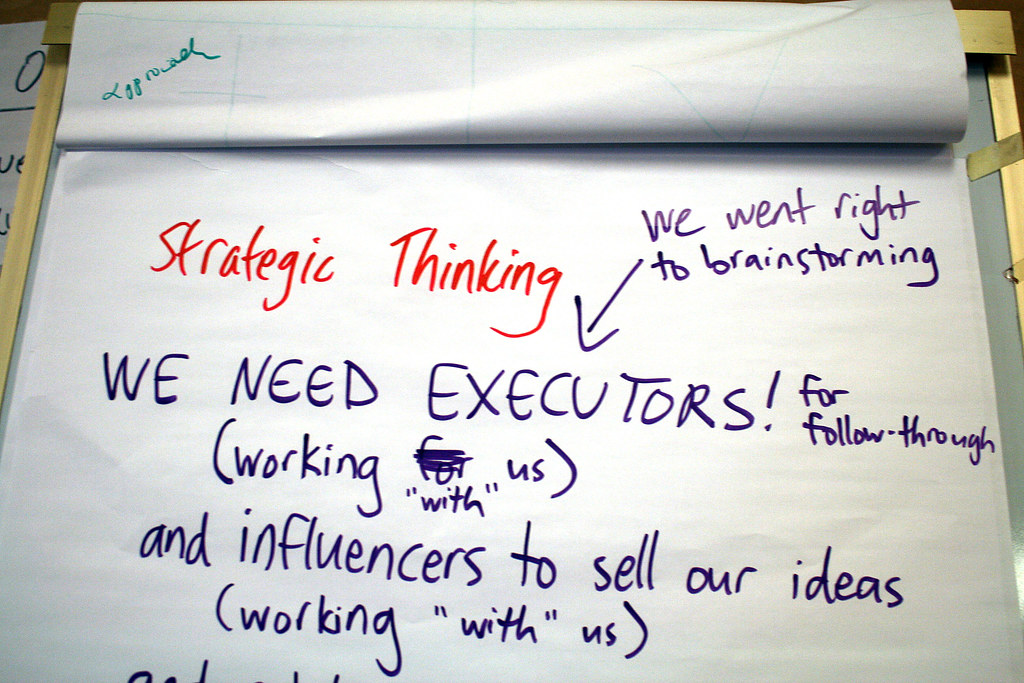
Introduction
Leadership is a multifaceted concept that plays a crucial role in various aspects of society, from business and politics to education and community development. At its core, leadership involves the ability to influence, inspire, and guide others towards a common goal or vision. It is not merely about holding a position of authority, but rather about fostering collaboration, motivating individuals, and empowering teams to achieve their full potential.
Effective leadership encompasses a range of qualities and skills, including communication, empathy, decisiveness, and integrity. A successful leader possesses the capacity to communicate effectively with people at all levels of an organization, articulating a clear vision and rallying others around it. Moreover, empathy allows leaders to understand the perspectives and needs of their team members, fostering a supportive and inclusive work environment.
Decisiveness is another crucial aspect of leadership, as leaders must make tough decisions in a timely manner, even in the face of uncertainty or adversity. Additionally, integrity is essential for building trust and credibility among followers. Leaders who demonstrate honesty, transparency, and ethical behavior inspire confidence and loyalty in their teams.
Furthermore, leadership is not confined to formal positions of authority; it can emerge at any level of an organization or community. Indeed, grassroots leaders who lead by example and empower others to take initiative can have a profound impact on their surroundings. Ultimately, leadership is about driving positive change, motivating others to excel, and creating a legacy that extends beyond individual achievements.
What is strategic thinker?
A strategic thinker is someone who possesses the ability to analyze complex situations, anticipate future trends, and formulate effective plans to achieve long-term goals. They have a knack for seeing the bigger picture and understanding how various elements interact within a system or organization. Strategic thinkers are adept at identifying opportunities and risks, weighing alternative courses of action, and making decisions that align with their overarching objectives. They often demonstrate creativity, critical thinking, and problem-solving skills, enabling them to navigate uncertainty and lead others towards success.
A strategic thinker is a visionary individual who excels in analyzing intricate scenarios, foreseeing potential developments, and crafting well-thought-out strategies to attain enduring objectives. They possess a unique ability to grasp the holistic view, comprehending the interconnectedness of different facets within a system or enterprise. Strategic thinkers adeptly spot opportunities amidst challenges, evaluate diverse options, and make informed decisions aligned with their overarching vision. Their repertoire includes creative problem-solving, critical analysis, and innovative approaches, enabling them to adeptly navigate complexities and guide teams toward achievement. They constantly seek to anticipate and adapt to changing circumstances, ensuring resilience and progress in the pursuit of organizational goals.
Understanding Strategic Thinking
Strategic thinking is a mindset and approach to problem-solving that involves considering the bigger picture, anticipating future trends, and making decisions that align with long-term goals and objectives. At its core, strategic thinking involves analyzing complex situations, identifying patterns and connections, and devising innovative strategies to navigate challenges and capitalize on opportunities.
One key aspect of strategic thinking is the ability to think critically and creatively. This involves questioning assumptions, challenging conventional wisdom, and exploring alternative perspectives. By thinking outside the box, strategic thinkers can uncover new possibilities and solutions that may not be immediately apparent.
Another important component of strategic thinking is foresight. Strategic thinkers anticipate changes in the external environment, such as shifts in market trends, technological advancements, or regulatory developments, and proactively adjust their strategies accordingly. By staying ahead of the curve, organizations can better position themselves to adapt to changing circumstances and seize competitive advantages.
Furthermore, strategic thinking requires a deep understanding of the organization’s goals, values, and resources. By aligning strategic decisions with the organization’s mission and capabilities, leaders can ensure that their actions contribute to long-term success and sustainability.
Finally, strategic thinking involves effective communication and collaboration. Leaders must be able to articulate their vision and strategy to stakeholders, rally support for their initiatives, and build consensus around shared goals. By fostering a culture of strategic thinking within the organization, leaders can empower employees at all levels to contribute their ideas and insights, driving innovation and continuous improvement.

Visionary Perspective
A visionary perspective is a forward-thinking outlook that transcends current limitations and imagines possibilities for the future. It involves the ability to see beyond the present circumstances, envisioning a future that is bold, innovative, and transformative. Visionary leaders possess the capacity to articulate a compelling vision that inspires others and motivates them to work towards a common goal.
At the heart of a visionary perspective is a belief in the power of imagination and creativity. Visionaries are unrestricted by preconceived assumptions or conventional wisdom; they dare to dream big and push the boundaries of what is possible. They see opportunities where others see obstacles, and they have the courage to pursue unconventional paths in pursuit of their vision.
Moreover, a visionary perspective is grounded in optimism and positivity. Even in the face of uncertainty or adversity, visionaries maintain unwavering faith in their vision and inspire hope in others. They are resilient in the face of setbacks, viewing challenges as opportunities for growth and learning rather than as insurmountable obstacles.
Furthermore, a visionary perspective is inclusive and collaborative. Visionary leaders recognize that realizing their vision requires the collective effort of a diverse team with complementary skills and perspectives. They foster a culture of openness and inclusivity, encouraging participation and innovation from all members of the organization.
Ultimately, a visionary perspective is about harnessing the power of imagination to create a better future. It requires courage, creativity, and a willingness to challenge the status quo. By embracing a visionary perspective, leaders can inspire others to join them on a journey of exploration and discovery, ultimately realizing their shared vision for a brighter tomorrow.
Exceptional strategic thinkers possess a keen analytical mind, capable of dissecting complex data sets, and distilling actionable insights. They leverage data-driven approaches to inform decision-making, identify emerging patterns, and mitigate risks effectively. By embracing analytical acumen, leaders can make informed choices that steer organizations towards sustainable growth.
Innovative Mindset

An innovative mindset is a way of thinking that is characterized by creativity, curiosity, and a willingness to challenge the status quo. Individuals with an innovative mindset are constantly seeking new solutions to problems, exploring different perspectives, and embracing change as an opportunity for growth and improvement.
At the core of an innovative mindset is a sense of curiosity and a desire to learn. Innovators are constantly asking questions, seeking new information, and exploring new ideas. They are not content with the status quo and are always looking for ways to push the boundaries of what is possible.
Moreover, individuals with an innovative mindset are not afraid to take risks and embrace failure as a natural part of the creative process. They understand that failure is not the end of the road but rather a stepping stone towards success. Setbacks don’t deter innovators; rather, they serve as important opportunities for learning that help them improve their concepts and methods.
Furthermore, an innovative mindset is characterized by a collaborative and interdisciplinary approach to problem-solving. Innovators recognize that the most groundbreaking ideas often emerge at the intersection of different disciplines and perspectives. They actively seek out opportunities to collaborate with others, leveraging diverse talents and expertise to drive innovation forward.
Ultimately, an innovative mindset is about approaching challenges with an open mind, a spirit of experimentation, and a willingness to embrace change. By cultivating an innovative mindset, individuals can unlock their creative potential and drive meaningful progress in their personal and professional lives.
Adaptive Agility
Adaptive agility is a dynamic approach to navigating change and uncertainty with flexibility, resilience, and responsiveness. It involves the ability to swiftly adjust strategies, processes, and behaviors in response to evolving circumstances, enabling individuals and organizations to thrive in volatile and complex environments.
At its core, adaptive agility requires a mindset that embraces change as a natural and inevitable part of the journey. Instead of resisting or fearing change, individuals with adaptive agility are open to new possibilities and opportunities that arise, recognizing that flexibility and adaptability are key to success in today’s rapidly changing world.
Moreover, adaptive agility entails a willingness to continuously learn and grow in order to stay ahead of the curve. Individuals who possess adaptive agility actively seek out new knowledge, skills, and perspectives that can help them navigate uncertain terrain and seize emerging opportunities. They are not afraid to step out of their comfort zones and experiment with new approaches, knowing that innovation and growth often arise from taking calculated risks.
Furthermore, adaptive agility involves the ability to pivot quickly and decisively when faced with unexpected challenges or setbacks. Adversity cannot paralyze someone who possesses adaptive agility; instead, it allows them to evaluate the circumstances, make well-informed decisions, and act quickly to correct course when necessary. This resilience enables them to bounce back from setbacks stronger and more resilient than before.
Additionally, adaptive agility is about fostering a culture of collaboration and teamwork within organizations. By encouraging open communication, trust, and transparency, leaders can empower employees at all levels to contribute their ideas and insights, fostering a collective sense of ownership and accountability for driving positive change.
Ultimately, adaptive agility is a critical skill for thriving in today’s fast-paced and unpredictable world. By cultivating a mindset of flexibility, resilience, and responsiveness, individuals and organizations can adapt to change more effectively, seize new opportunities, and achieve sustainable success in the long run.
Collaborative Spirit

Exceptional strategic thinkers recognize the power of collaboration in achieving collective goals. They foster a culture of inclusivity, where diverse perspectives are valued, and teamwork thrives. By cultivating a collaborative spirit, leaders can harness the collective intelligence of their teams, driving innovation, and fostering a sense of ownership and camaraderie.
A collaborative spirit is an ethos characterized by a willingness to work together, share ideas, and support one another towards common goals. It involves fostering an environment of cooperation, teamwork, and mutual respect, where individuals are empowered to contribute their unique skills and perspectives for the collective benefit.
At its core, a collaborative spirit emphasizes the importance of inclusivity and open communication. It encourages individuals to actively listen to others, seek out diverse viewpoints, and engage in constructive dialogue to find innovative solutions to shared challenges. Rather than working in silos or competing against each other, collaborators recognize the value of pooling resources and expertise to achieve greater outcomes together.
Moreover, a collaborative spirit fosters a sense of trust and camaraderie among team members. When individuals feel supported and valued by their peers, they are more likely to collaborate effectively, share knowledge, and take ownership of collective successes and failures. This sense of camaraderie builds a strong foundation for collaboration and enables teams to overcome obstacles and achieve their goals with confidence.
Furthermore, a collaborative spirit encourages generosity in sharing credit and recognition for accomplishments. Rather than seeking individual accolades, collaborators celebrate the achievements of the team as a whole, recognizing that success is often the result of collective effort and collaboration. This fosters a culture of appreciation and gratitude, which in turn strengthens bonds and motivates team members to continue working together towards shared objectives.
Additionally, a collaborative spirit extends beyond organizational boundaries, encompassing partnerships and alliances with external stakeholders, such as clients, suppliers, and community organizations. By fostering mutually beneficial relationships with these stakeholders, collaborators can leverage additional resources and expertise to achieve common objectives and create shared value for all parties involved.
Ultimately, a collaborative spirit is essential for fostering innovation, driving positive change, and building resilient communities. By embracing the principles of cooperation, teamwork, and mutual support, individuals and organizations can harness the collective power of collaboration to achieve greater impact and success than they could ever achieve alone.
Resolute Leadership

At the helm of exceptional strategic thinking lies resolute leadership, characterized by decisiveness, integrity, and unwavering conviction. Leaders who embody resolute leadership inspire trust and confidence, galvanizing teams to overcome obstacles and pursue ambitious goals. By leading with conviction, leaders can instill a sense of purpose and direction, propelling organizations towards success.
Resolute leadership embodies a steadfast commitment to vision, values, and decisive action, even in the face of adversity or uncertainty. It is characterized by unwavering determination, courage, and clarity of purpose, empowering leaders to navigate challenges with confidence and inspiring others to follow suit.
At its core, resolute leadership involves a firm dedication to upholding principles and staying true to one’s convictions, even when confronted with difficult choices or opposition. Resolute leaders have a clear understanding of their goals and priorities, and they remain resolute in their pursuit, regardless of obstacles or setbacks along the way.
Moreover, resolute leadership requires courage—the courage to make tough decisions, the courage to take calculated risks, and the courage to stand up for what is right, even when it is unpopular or difficult. Resolute leaders do not shy away from challenges; instead, they confront them head-on with unwavering resolve and determination.
Moreover, decisiveness—the capacity to make prompt and wise decisions grounded in thorough investigation, sound judgment, and intuition—is another attribute of resolute leadership. Resolute leaders do not waver or procrastinate in their decision-making; rather, they act decisively, trusting their instincts and convictions to guide them towards the best course of action.
Additionally, resolute leadership is inspirational, inspiring others to rally behind a common cause and strive for excellence. Resolute leaders lead by example, demonstrating integrity, resilience, and perseverance in their words and actions. They inspire trust and confidence in their followers, motivating them to overcome obstacles and achieve shared goals together.
FAQs (Frequently Asked Questions)
- What role does strategic thinking play in effective leadership? Strategic thinking serves as the linchpin of effective leadership, enabling leaders to anticipate challenges, capitalize on opportunities, and chart a course towards success.
- How can one cultivate strategic thinking skills? Cultivating strategic thinking skills requires a multifaceted approach, including continuous learning, embracing diverse perspectives, and fostering a culture of innovation and collaboration.
- Why is adaptability essential for strategic thinkers? Adaptability allows strategic thinkers to navigate uncertainty and complexity with agility, ensuring that strategies remain relevant and effective in dynamic environments.
- How does collaboration contribute to strategic thinking? Collaboration fosters synergy and creativity, empowering teams to generate novel ideas, solve complex problems, and drive innovation.
- What are the benefits of fostering an innovative mindset? Embracing an innovative mindset fuels creativity, fosters a culture of experimentation, and drives continuous improvement, ultimately positioning organizations for long-term success.
- Why is resolute leadership critical in strategic thinking? Resolute leadership inspires confidence, fosters trust, and provides a clear sense of direction, empowering teams to execute strategies with determination and purpose.
Conclusion
In conclusion, the six characteristics identified by an expert in leadership offer invaluable insights into the essence of exceptional strategic thinking. By embodying these traits, leaders can navigate complexity with confidence, inspire innovation, and steer organizations towards sustainable growth. Let these principles serve as guiding beacons on your journey to leadership excellence.









